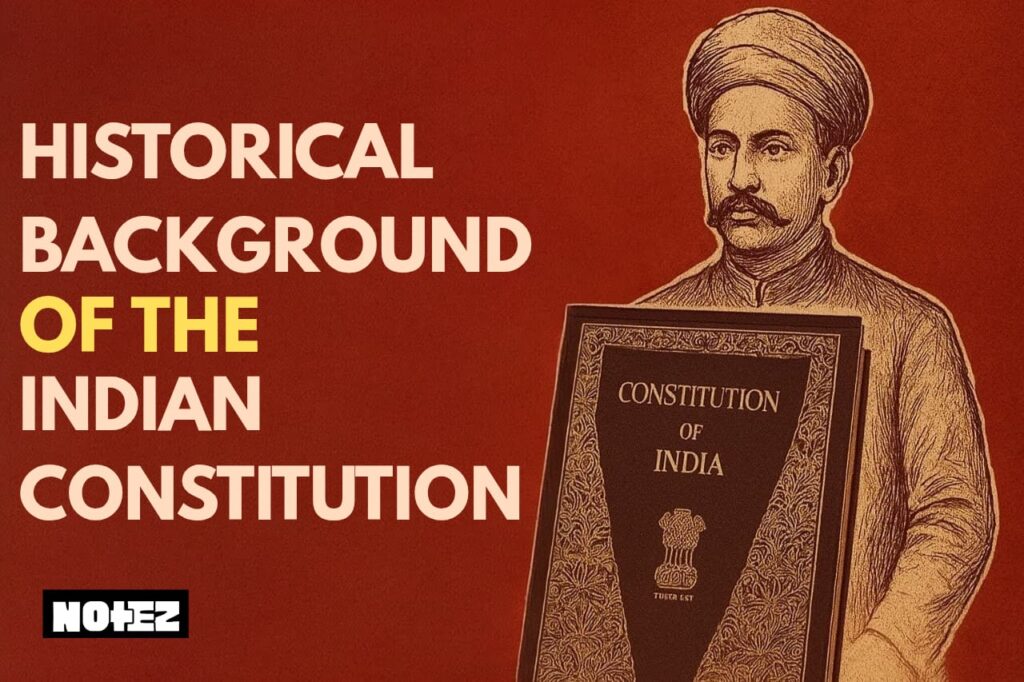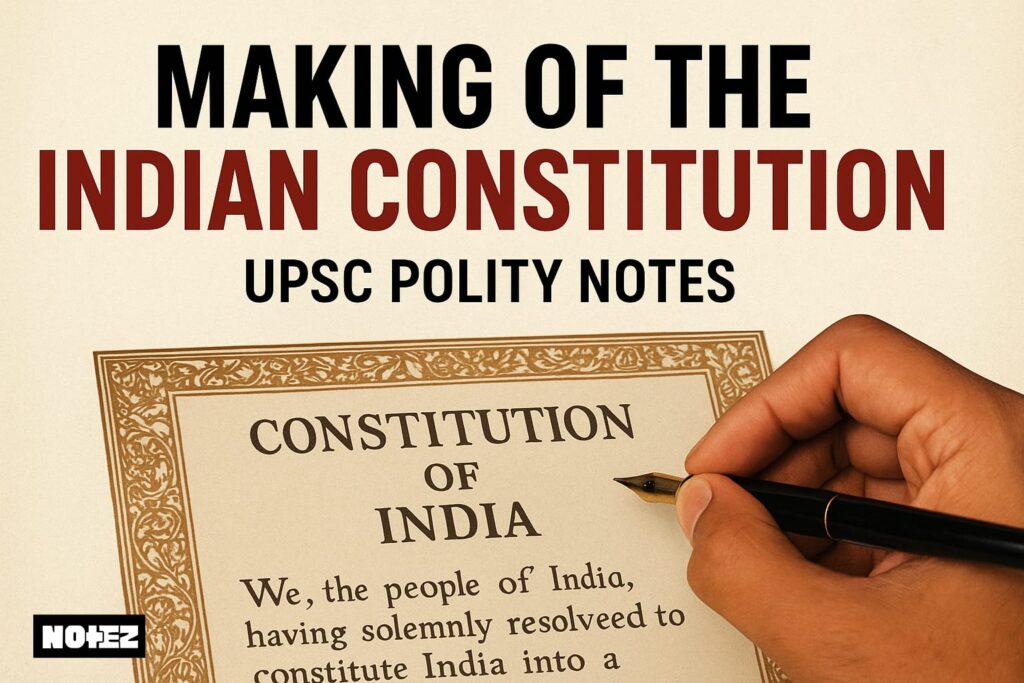The Constitution of India, which came into force on 26 January 1950, is not just a legal document but a culmination of centuries of struggle, negotiation, and gradual political awakening. To truly understand its spirit, one must trace the historical background that shaped it. The roots of the Indian Constitution can be found in the series of British reforms and acts that attempted to address India’s growing demand for self-governance. These reforms, though limited and often motivated by imperial needs, gradually built the foundation for democratic aspirations in India.
Why Were Reforms Needed?
The British never initially intended to grant self-rule to Indians. Their primary objective was colonial exploitation. However, several developments forced them to introduce political reforms:
1. Administrative Convenience – The vastness of India required a systematic administrative machinery.
2. Economic Exploitation and Social Consequences – Rising discontent due to economic drain, famines, and discriminatory policies triggered unrest.
3. Rise of Indian Nationalism – The formation of the Indian National Congress in 1885 and increasing political awareness compelled the British to respond.
4. Global Influences – Democratic movements worldwide, especially after World War I and II, pressured Britain to justify its colonial presence.
5. Freedom Movements and Mass Uprisings – From the Revolt of 1857 to Gandhian mass movements, India’s resistance forced the colonial rulers to grant concessions in phases.
Sequence of British Constitutional Reforms and Acts
1. The Regulating Act of 1773
The first attempt by the British Parliament to regulate the East India Company’s affairs. It created the office of the Governor-General of Bengal and established a Supreme Court. Though limited, it marked the beginning of parliamentary control.
2. Pitt’s India Act, 1784
Introduced a dual system of governance—Company rule supervised by the British Crown through a Board of Control. This tightened political control over Indian administration.
3. Charter Acts (1793–1853)
Charter Act 1833 centralized administration and made the Governor-General of Bengal the Governor-General of India.
Charter Act 1853 introduced open competition for civil services, paving the way for merit-based bureaucracy.
4. The Government of India Act, 1858
After the Revolt of 1857, the East India Company was abolished, and direct Crown rule was established. A Secretary of State for India was appointed, marking the beginning of centralized imperial governance.
5. Indian Councils Acts (1861, 1892, 1909)
1861 allowed limited Indian representation in legislative councils.
1892 increased legislative councils but gave them minimal powers.
1909 (Morley-Minto Reforms) introduced separate electorates for Muslims—sowing seeds of communal politics.
6. Government of India Act, 1919 (Montagu-Chelmsford Reforms)
Introduced dyarchy in provinces, dividing subjects into “reserved” and “transferred.” It expanded legislatures and gave Indians limited responsibility in governance.
7. Government of India Act, 1935
The most comprehensive act, introducing provincial autonomy and proposing a federal structure. Though federation never materialized, provincial autonomy gave Indians real experience of governance.
8. Indian Independence Act, 1947
Granted independence and partitioned India into two dominions. This marked the final transfer of power, paving the way for the Constituent Assembly to draft the Constitution.
The Continuity into the Indian Constitution
Each of these reforms and acts added layers of experience, institutions, and expectations:
Parliamentary procedures from the British model.
Federal features influenced by the 1935 Act.
Ideals of representation and accountability inspired by Indian nationalist movements.
The Constituent Assembly built upon these legacies but went much further—embedding values of sovereignty, democracy, justice, and equality, which colonial reforms had deliberately restricted.
Conclusion
The Indian Constitution did not emerge in a vacuum. It evolved through centuries of struggle against colonial domination, shaped by the compulsions of British reforms and the aspirations of Indian leaders. The various acts and reforms introduced by the British were not acts of generosity but outcomes of pressure, resistance, and the rising tide of nationalism. What began as reluctant concessions eventually culminated in India’s most powerful democratic document—the Constitution.
—
✨ This way, the historical background of the Indian Constitution is not merely a list of British laws, but a story of how colonial necessity met Indian resilience, creating the foundation of the world’s largest democracy.


